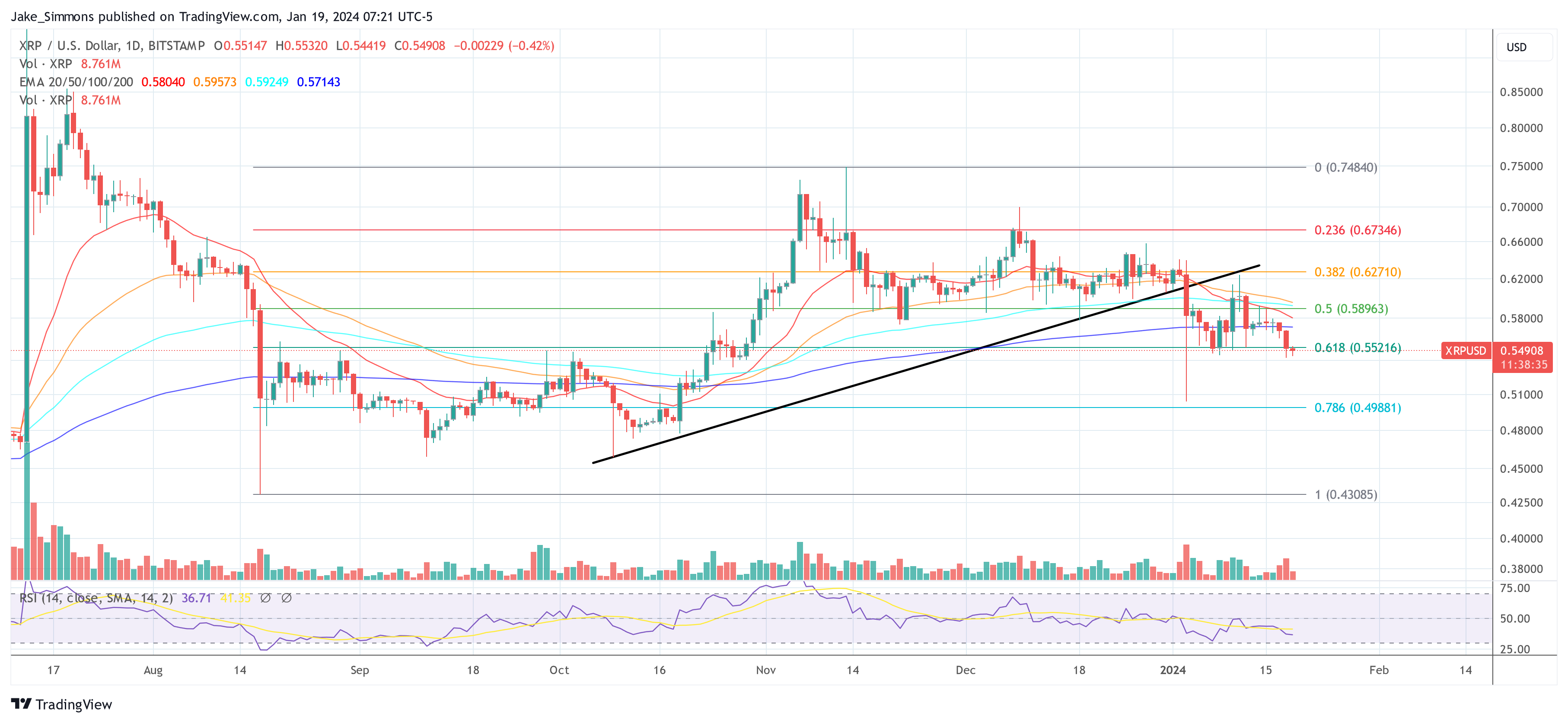[ad_1]
The XRP price dynamics, in comparison to its more dominant counterparts, Bitcoin (BTC) and Ethereum (ETH) have been a subject of intense scrutiny and debate. Pro-XRP lawyer Bill Morgan recently shed light on this perplexing trend through a detailed discourse on X (formerly Twitter), sparking a wide array of responses and theories from the community.
Morgan, reflecting on the long-term performance of XRP, pointed out a noticeable trend: “The XRP price dynamic seems to be to move with the market meaning BTC and Ethereum but to gradually over the long term decline in value against those two assets no matter what Ripple does.”
He highlighted a significant decline in XRP against BTC (84.85%) and ETH (91.58%) over the last five years. Initially attributing this trend to the lawsuit against Ripple, Morgan noted that even subsequent lítico victories and clarity for XRP in the second half of 2023 did not reverse the declining trend, leaving the community questioning the underlying causes.
XRP Underperforms Significantly Vs. BTC, ETH: Why?
The discourse unfolded further in the comment section, where various users presented their hypotheses. One user branded XRP as “the most hated coin in crypto,” suggesting that a persistent negative sentiment, combined with aggressive shorting and attacks, has been detrimental to XRP’s value. Morgan concurred, acknowledging the impact of the “FUD narrative” but doubting it as the primary cause.
The discussion delved into other potential factors, including “tribalism” in the crypto space, the lack of speculative media attention around XRP, and the influence of large holders of BTC and ETH on the XRP price. Morgan termed these collective factors as the “narrative explanation,” acknowledging their role but still not convinced of them being the medial issue.
“I call that the narrative explanation and I do believe it contributes to XRP price performance against BTC and ETH. I don’t think it is the main explanation. The FUD narrative against XRP is intense and continuous. It even included absolute nonsense about the SEC v Ripple case,” Morgan stated.
A pointed criticism came regarding the developer activity on the XRPL (XRP Ledger), with a user highlighting a lack of development as a significant concern. Morgan agreed, marking the inactivity as an issue. “Lack of developer activity is definitely a problem,” the lawyer remarked.
However, he firmly dismissed the notion that the monthly release of 200 million coins by Ripple from escrow is a factor, stating, “The escrow argument is easy to dismantle.” He also countered the argument about XRP’s utility, or lack thereof, by presenting evidence of its use in 50% of Ripple’s ODL (On-Demand Liquidity) transactions.
Competition And Propaganda
The role of stablecoins like USDT and USDC in cross-border payments and remittances, a domain where XRP aims to excel, was also discussed. Morgan admitted that increased competition in this specific area might indicate a broader issue: the lack of development of other applications for XRP on the XRPL.
Offering a broader perspective, Yassin Mobarak, founder of Proferir Capital, pointed to the “propaganda against XRP” as a significant deterrent to its value appreciation.
He argued:
Honestly, given the unfortunate successful propaganda against XRP in the crypto community, we should not look to existing retail investors for XRP price appreciation. That will likely never come. XRP will only grow from demand coming from utility, institutional users & investors, and new retail entrants into the space who have not been tainted by the historical propaganda.
As the conversation unfolds, it becomes evident that the factors influencing XRP’s price dynamics are multifaceted and complex. However, one thing is clear: if the supply side can be ruled out as a problem (Ripple escrow), it is the demand side which is lacking.
At press time, XRP was trading at $0.54908 and has fallen 2.5% in the last 24 hours, in line with the broader market.

Featured image from Shutterstock, chart from TradingView.com
[ad_2]


